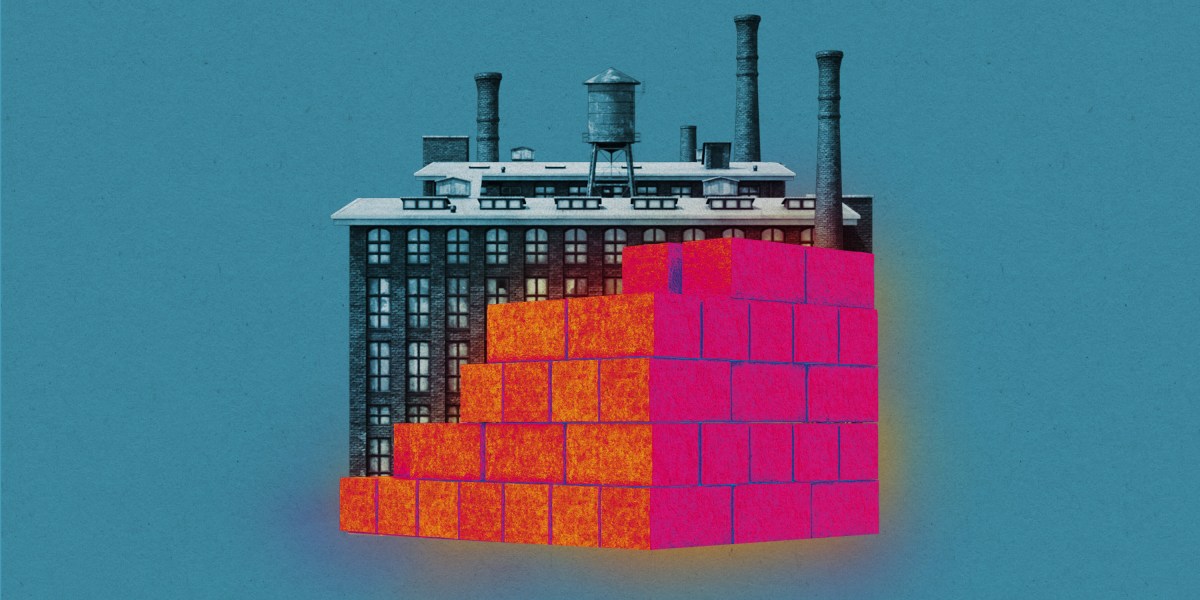This article is from The Spark, MIT Technology Review’s weekly climate newsletter. To receive it in your inbox every Wednesday, sign up here.
Welcome back to The Spark!
I’m June Kim, a new fellow reporting on climate at Tech Review. Casey is off enjoying a well-deserved break, so this week I will be filling in for her. But rest assured, we are back with some fun news about a classic Spark topic: hot bricks! (a.k.a. thermal or heat batteries)
This is an exciting week for the heat-battery industry. Yesterday, Antora Energy, a California-based startup, announced its plan to open its first large-scale manufacturing facility in San Jose. While Antora has been producing modular heat batteries for a while, the company says this new factory will significantly increase its production capacity, which has the potential to help transition heavy industries away from fossil fuels.
I covered the announcement in detail in my recent Tech Review article. But for the newsletter today, let’s take a broader look at Antora’s announcement and the industry as a whole.
The “heat problem” in manufacturing industries
When we talk about decarbonization, we often think about electrifying everyday activities, such as transitioning from cars with internal-combustion engines to EVs, replacing gas stoves with induction cooktops, and upgrading oil furnaces to heat pumps.
However, a significant portion of global carbon emissions also stems from less visible sources: industrial manufacturing processes that produce essential materials like glass, steel, cement, and common goods like canned food and kitchen appliances. These processes require extremely high temperatures, often exceeding 1,000 or even 1,500 °C.
Currently, the primary source of this high heat is the combustion of fossil fuels. According to the International Energy Agency, industrial heat accounts for 20% of global emissions. Antora and other startups in the heat-battery sector are focusing on developing efficient, cleaner solutions for providing this essential heat.
We’ve covered thermal batteries before as a unique approach to decarbonizing heavy industry. While companies use slightly different methods to generate and store heat, the fundamental concept is pretty straightforward: renewable energy sources like wind and solar are used to heat relatively low-cost materials, such as solid carbon blocks (in Antora’s case), which are insulated until the stored heat can be discharged for manufacturing purposes.
Antora’s new factory, slated to begin operations next year, will produce modular heat batteries that can be tailored to meet the specific needs of clients.
“Reindustrialization of the American heartland”
In my conversation with Justin Briggs, a cofounder and chief operating officer at Antora, he brought up his vision for the “reindustralization of the American heartland.” He believes that by offering cleaner heat to industries traditionally reliant on fossil fuels, heat batteries can help these sectors continue to grow while reducing emissions at the same time.
I found this perspective intriguing, as it’s often overlooked. Climate technologies aren’t just about the technology itself and what it enables; they also impact the people working in these industries or those directly affected by the technology.
Briggs’s theory is that people who already work with hot manufacturing processes won’t require much retraining to use Antora’s product, making it an appealing option for companies looking to take advantage of a boom in clean-energy funding.
This boom is driven in part by government policies, like the Inflation Reduction Act, that provide funding to accelerate the transition away from fossil fuels. A major concern is how to help emissions-heavy industries like manufacturing and their workforces transition to cleaner processes without major disruption—such as shutting down, or bringing in entirely new workforces to operate new technologies.
If there is a cleaner alternative that reduces emissions while allowing workers to continue applying their existing skills, it would alleviate the stresses like job losses and restructuring that some people fear might accompany such a substantial energy transition.
What lies ahead for the heat-battery industry?
Industry experts are closely monitoring the market and express excitement about what the future holds—but also emphasize that we’re still in the industry’s very early stages.
Blaine Collison, an executive director at the Renewable Thermal Collaborative, a coalition working to decarbonize industrial heat, told me that he believes heat batteries are “on the verge of substantial initial scaling.”
His optimism is partly due to heat batteries’ flexibility and their capacity to address multiple issues simultaneously. For one thing, these batteries can relieve the pressure on the grid by storing excess renewable energy while providing a cleaner source of heat to industries that have traditionally relied on fossil fuels.
Antora’s announcement of its new plant is clear evidence of this trend. Rondo Energy, another startup producing heat batteries, already operates its own manufacturing facility and will be increasing its production capacity soon. And a German company, Kraftblock, has joined forces with companies like Pepsi to replace gas-fired boilers with heat batteries, reducing emissions from the production of items such as potato chips and canned drinks.
Heat batteries may not be the only solution to the industrial heat problem, but they are certainly an exciting field to keep a close eye on.
Related reading
Want to learn more about “hot bricks” and how thermal storage works? Read Casey’s story from earlier this year.
When it comes to “electrifying everything,” beer is in on the action too. MIT Tech Review’s senior energy editor, James Temple, wrote about how AtmosZero is using electrified boilers to reduce emissions at a brewery.
The idea of using hot bricks to store heat has been around for a while. Check out this story from 2017 about exactly that.
Keeping up with climate
Investigations revealed that Occidental Petroleum’s big bet on carbon capture fell short of its big promises. It highlights the risk of greenwashing and of overreliance on CCS (carbon capture and storage) in meeting companies’ climate goals. (Bloomberg)
The economic rivalry between the US and China is expanding to minerals. That could have lasting consequences for EV expansion in the US. (Heatmap News)
More and more outdoor workers face dangerous working conditions from extreme heat. There are no good regulations in place to protect them. (Grist)
There is a lot of misinformation when it comes to climate solutions. Here’s a comprehensive fact-check on common misconceptions around electric vehicles. (Carbon Brief)
This video shows, step by step, how a New York–based company captures CO2 into a concrete block. (Canary Media)
Vermont’s Green Mountain Power is doing something that few utility companies do: giving out large batteries to customers to prevent blackouts. (The New York Times)











